Change in Material Per Turn

This chart is based on a single playout, and gives a feel for the change in material over the course of a game.
Slither is a dynamic square board connection game in which players move and place stones.
White's objective is to connect the right and left hand sides of the board while black aims to connect the top and bottom edges.
On a turn, a player must place a stone anywhere where it isn't diagonally adjacent to any other stones of his color unless they are connected to each other orthogonally by a common stone. A player may also choose to move one of his stones already on the board to a diagonally or orthogonally adjacent space before placing a new stone. After the turn is complete no one player's stones should be diagonally adjacent and not connected orthogonally through a common stone. If a player has no legal move on his turn, he must pass. Passing is otherwise not permitted. There will never be a position where neither player has a move.
No draws are possible in Slither.
A player may only move a stone if it is part of a group which is orthogonally adjacent to an opponent's stone.
General comments:
Play: Combinatorial
Mechanism(s): Connection
Components: Board
| BGG Entry | Slither |
|---|---|
| BGG Rating | 7.97963 |
| #Voters | 81 |
| SD | 1.47055 |
| BGG Weight | 3.5714 |
| #Voters | 7 |
| Year | 2010 |
| User | Rating | Comment |
|---|---|---|
| AwxAngel | 8 | |
| hippiephysicschick | N/A | PnP copy need to print out rules, thrift go board |
| joematti | 7 | |
| bootleby | 10 | |
| fxjohn | N/A | Using go board and stones |
| mrraow | 8 | Interesting connection game. It shares some of the features of hex, e.g. ladders, while being somehow more dynamic. Need to play more to see what is/isn't connected, and how to block/make connections. |
| arian | 7 | |
| CoreyClark | 10 | Okay update the game is now Slither. I still award it a ten especially after getting a good scope for the depth of this game. |
| Palimpsest | 9 | |
| gtranbot | 9 | Simple rules, very deep. You'll be baffled as the fortunes of the game whipsaw back and forth. |
| SaiSaysPlayGo | 8 | |
| bacontime | 7 | |
| fogus | 7.4 | 2016 ==== Slither is my favorite connection game at the moment. Last year the game hit me hard, but lately I've become a bit tired of the connection genre. I can still appreciate its loveliness however, and my matches (mostly online for me) are always tense. This is (yet) another abstract that I love but stink at. |
| fhsIV | 7 | |
| FauxSloMo | 10 | |
| johncf1018 | 8 | |
| megamau | 8 | |
| slashing | 7 | |
| dooz | 8 | |
| leffe dubbel | 6 | |
| molnar | 8 | |
| krommenaas | 7 | Played with Go board and pieces but quite different. Amazing the one time I played it, but ended in a draw and I think it often will. |
| fuchsundbrunnen | 8.6 | |
| calandale | 8 | |
| Smjj | 1 | |
| oblomobka | 7 | |
| LukeJS | 7 | |
| mls75 | N/A | Use travel stratego board |
| luigi87 | 9 | |
| Malaschitz | 8 | |
| s_jared | 7 | |
| Pollomostro | 9 | |
| nonzer0 | 9.6 | |
| TumbleSteak | 8 | |
| orangeblood | 7 | A unique, fun connection game where you have the ability to "slither" around a bit by moving stones after they've been placed. I play on Little Golem. |
| elhnad | N/A | Littlegolem |
| simpledeep | 9 | |
| mzmzmz | 7.75 | |
| schwarzspecht | 8 | |
| pled | 8 | |
| rorschah | 8 | |
| 4characters | 9 | Like hex or gonnect but better. Every play seems like you are simultaneously playing defense and attacking - in the lead and trailing. Though not particularly innyovstive, this design is a lot of fun to play and the best connection game I have experienced so far |
| DanielAjoy | 8.2 | |
| bdean152 | N/A | go board |
| RichardIngram | 8 | |
| tckoppang | 6 | A game of surprising tension and turns of fortune. Play 9x9 to learn. Upgrade quickly to 13x13 for enjoyment. The larger board allows for multiple pockets of action to develop, multiple fronts on which to attack and defend. At different points in our third game of Slither, my wife and I both thought that we had the game in the bag only to see the game change along with our prospects. That sort of up and down, back and forth action seems common to Slither. The tension is tremendous. The restriction on diagonal placement, combined with the ability to move a piece each turn, makes for very dynamic play. My only criticism is that it can be difficult to plan ahead because the board-state is *so* fluid. I suspect practice will help, but this does provide a barrier to entry. I recommend that everyone give it a try. If you already enjoy connections games, then this one is a no-brainer. |
| wmshub | 7.5 | Rating very tentative, after just two plays. It has the potential to be a very interesting abstract. |
| The Player of Games | 8.5 | Using my 9x9 and 13x13 go board to play this excellent connection game. |
| g057721 | 10 | This is a hidden gem, and deserves to be a lot more popular. |
| XMJA | 9.25 | |
| ziph4 | 8 | |
| gmcnish | N/A | Go set. 13x13 recc to start |
| drunkenKOALA | N/A | interested |
| DanielBeaver | 8.5 | Quite an interesting connection game. The orthogonal connections lend it a much less "airy" feel than hex-based connection games - there are fewer virtual connections, and so it is more visually "solid". But at the same time, the dynamic nature of the stones causes the board position to shift around. The two colors of stones are like wrestlers made of liquid, crashing against each other, but also trying to flow past. It's very neat. As a bonus, it's playable with a standard go set. So many abstracts require custom components and boards, it's refreshing to be able to play it physically using good components. |
| coweressel56 | 6 | |
| reyalicea | 8 | Fantastic game simply elegant! |
| dispatch134711 | 8 | I wanted to be the 30th rating, this game deserves a chance. Love the ideas, will update ranking after playing more. |
| alekerickson | 8 | |
| mxpf | 8 | |
| pleclenuesse | 6 | |
| russ | 8 | Enjoyable connection game with a twist, that you may move a piece to an adjacent square in addition to the usual placing of a new piece. This plus the restriction about diagonal connections makes for some learning curve and aha-effects because not all experience from other connection games necessarily applies here. :) |
| srlindemann | 8 | |
| Olafslomp | 6 | Played with a regular Go board and pieces |
| scih | 7.5 | |
| hyperpape | 8 | |
| no_where_dense | 7 | Very nice square board connection game. You can move your dead stone to revive and that is quite cool. |
| Panglott | 10 | Just an amazing abstract, incredibly simple rules but deep gameplay, a fantastic solution to the problem of a connection game on a square board. I think I like this even more than Hex. |
| drbobjack | 9 | An interesting connection/movement game hybrid. It avoids the normal square grid problems by mandating the existence of orthogonal connections whenever a diagonal stone would be placed. It makes up for this major restriction by allowing movement of a single piece before placement. The result creates some incredibly interesting positions. Almost-certain connections can be broken up to create problems for an almost-certain win for your opponent; poorly positioned stones can be used as liabilities. At the same time, you can maintain positions if you want to -you only lose out on flexibility. After 13 games, positions are still very unclear, but I've gotten a lot better at it. This is an encouraging sign for the game's depth. If you're an abstract game fan, you should check it out. |
| Zickzack | N/A | Very difficult for me to rate at the moment. The ruleset is simple and straightforward, addressing the problem of creating a connection game for the square grid. The solution entails that a player has two different forms of action per turn. In general, I do not like that, but it is unfair to rate a game without looking at the game play. The game play is action, action, action. That should attract many players. It is also telling to compare Slither to Hex. Hex is a game which requires major reading skills. The better players become, the less is "spelled out" on the board. While that looks impressive, I am not sure, if it is a feature. Of course, it takes a lot of reading skills to play Slither, but the moves are also spelled out during the game. I prefer the latter approach. So, in a way, Slither improves on Hex. |
| plays for keeps | 8.05 | Highest on my list of 'abstracts to get back to'. My wife seemed to enjoy it and I have just compiled thrift bits to make a mini-version to add to my Traveling Game Bag. Both of these aspects should help in getting this played sooner than later. |
| takeoutweight | 5 | I respect this game as it strikes a very unique tone. I know there are people who are wild for this game and I've played a few dozen times but I can't say that I enjoy it. Take my opinion for what it's worth but this game feels obnoxious and cheesy. Perhaps it unlocks at a higher level, but at this point my games are all clumsy tug-of-wars. I prefer the delicate, high-wire grace of hex as opposed to Slither, which feels like two people slowly trying to bury each other in sand--where the strongest strategic position can be eroded by persistent bull-headedness. |
| Ottia | 10 | It's amazing that just two little twists on Hex (moving one piece to one adjacent space before placing a new one and banning moves which leaves pieces connected only diagonally) can result in a game so different and so interesting in its own right. Slither is obviously still supremely elegant, but also more dynamic than most connection games, requiring a completely different way to build barriers (i.e. the basic ingredient for the genre) and hiding more surprises as well - instead of placid endgames after all the decisive spaces have been safeguarded, here every space up from one side of the board to the other will cost a sweat. |
| Blewsky | 10 | |
| milomilo122 | 10 | One of my two favorite games in the universe. --------------------------------------------------------- It's more or less Hex on a Square board, with 2 extra rules: one which allows you to move your stones after they're placed and one that prevents stalemates. But these two rules conspire to create a profoundly dynamic game. It's incredibly variable, often featuring dramatic lead changes, and the tactical and strategic surprises are just sublime. --------------------------------------------------------- Connection games nearly all feature choke-points that develop over the course of the game. If you identify and control the choke points before your opponent does, you win. But with Slither, the choke points MOVE, A LOT. To win you have to control where the choke points go and set yourself up to control them when they get there. It's mind boggling. --------------------------------------------------------- This game also prompts me to lament how commercially minded we all are. Here's a timeless, eternal game, but nobody knows about it because there's no commercial version with fancy bits to drool over. grump. --------------------------------------------------------- NOTE: new players should start on a 10x10 board, or even 9x9. This is much more complex tactically than any other connection I've played - playing on a small board will help you learn more quickly, as with Go. |
| jwkeener | 10 | |
| guitarsolointhewind | 8 | |
| Talisinbear | 8 | Guess we all own it. Has my attention |
| njking | 6 | |
| andyofsweden | 10 | An absolutely magnificent and brilliant abstract game, played on a Go-board, in the line of modern classics like Hex, Connect6 and Lines of Action. As with Hex the rules are painfully simple. Recommended to all lovers of simple but elegant and deep abstract games. I find every game to be a most rewarding experience. I play it at LittleGolem.net |
| Jugular | 9 | Delicious decisions; Snaking, slithering, shenanigans. An astounding abstract. |
| bluebee2 | 9 | My first PnP. Craft store pieces on a Sudoku board. Also, Pente pieces on a Pente board. |
| Takvorian | 7 | |
| brafman | N/A | Play on 13x13 go board |
| big_buddha | 9 | |
| ChristianDK | 7 | Dynamic connection game. |
| rarevos | N/A | A game I ultimately wanted to like more than I actually liked it. I'll never argue that a game needs to reveal its depths right away, but I found that after a dozen games, I learned basically nothing and was in no position to understand if I was playing well, how to connect an earlier move to a later outcome (and how to adjust my play accordingly), and could not draw any teachable moments out of anything. In the end it was almost overwhelmingly tactical, and my brain was simply unable to understand what I was supposed to be doing, why it worked (or didn't), and what I could do to exert positive influence over the game. Face-to-face 9x9 games with my friend yielded the same result as playing online: the rules were simple, there was a winner at the end, but as to how the actual game unfolded, we hadn't much of a clue. |
| dkwan86 | 8.5 | |
| FiveStars | 10 | One of the greatest games ever designed! |
| qswanger | 10 | Wow ... just WOW. Nick Bentley made me see the light regarding the greatness of this game. Sweet, slick, slithering goodness here. It's very arrogant to say that this is the new Go, but it is the new Go. |
| garygarison | 8 | Preliminary rating. This could be the real deal. Update: About 10 plays in now, and Slither is for the time being the only abstract I want to concern myself with. Marvelous game. |
| msaari | 4 | I've been playing this on Little Golem because of a recommendation I got. I didn't realize how pure a connection game this was. It's the genre of abstracts I dislike the most and as expected, I wasn't able to find any fun in Slither. It's not a bad game, as such, so if you like connection games, you should probably give it a go. Avoid. |
| AI | Wins vs prev level | Draws | Losses | #Games | Win% |
|---|---|---|---|---|---|
| Random | |||||
| Grand Unified UCT(U1-T,rSel=s, secs=0.01) | 36 | 0 | 0 | 36 | 100.00 |
| Grand Unified UCT(U1-T,rSel=s, secs=0.03) | 36 | 0 | 7 | 43 | 83.72 |
| Grand Unified UCT(U1-T,rSel=s, secs=0.07) | 36 | 0 | 14 | 50 | 72.00 |
| Grand Unified UCT(U1-T,rSel=s, secs=0.55) | 36 | 0 | 11 | 47 | 76.60 |
Level of Play: strong beats weak 60% of the time (lower bound with 90% confidence).
| Size (bytes) | 32673 |
|---|---|
| Reference Size | 10328 |
| Ratio | 3.16 |
Ai Ai calculates the size of the implementation, and compares it to the Ai Ai implementation of the simplest possible game (which just fills the board). Note that this estimate may include some graphics and heuristics code as well as the game logic. See the wikipedia entry for more details.
| Playouts per second | 3376.12 (296.20µs/playout) |
|---|---|
| Reference Size | 1317523.06 (0.76µs/playout) |
| Ratio (low is good) | 390.25 |
Tavener complexity: the heat generated by playing every possible instance of a game with a perfectly efficient programme. Since this is not possible to calculate, Ai Ai calculates the number of random playouts per second and compares it to the fastest non-trivial Ai Ai game (Connect 4). This ratio gives a practical indication of how complex the game is. Combine this with the computational state space, and you can get an idea of how strong the default (MCTS-based) AI will be.
| 1: White win % | 46.62±2.17 | Includes draws = 50% |
|---|---|---|
| 2: Black win % | 53.38±2.18 | Includes draws = 50% |
| Draw % | 0.00 | Percentage of games where all players draw. |
| Decisive % | 100.00 | Percentage of games with a single winner. |
| Samples | 2014 | Quantity of logged games played |
Note: that win/loss statistics may vary depending on thinking time (horizon effect, etc.), bad heuristics, bugs, and other factors, so should be taken with a pinch of salt. (Given perfect play, any game of pure skill will always end in the same result.)
Note: Ai Ai differentiates between states where all players draw or win or lose; this is mostly to support cooperative games.
Rotation (Half turn) lost each game as expected.
Reflection (X axis) lost each game as expected.
Reflection (Y axis) lost each game as expected.
Copy last move lost each game as expected.
Mirroring strategies attempt to copy the previous move. On first move, they will attempt to play in the centre. If neither of these are possible, they will pick a random move. Each entry represents a different form of copying; direct copy, reflection in either the X or Y axis, half-turn rotation.
| Game length | 43.12 | |
|---|---|---|
| Branching factor | 56.48 | |
| Complexity | 10^69.03 | Based on game length and branching factor |
| Computational Complexity | 10^6.62 | Saturation reached - accuracy very high. |
| Samples | 2014 | Quantity of logged games played |
| Distinct actions | 485 | Number of distinct moves (e.g. "e4") regardless of position in game tree |
|---|---|---|
| Killer moves | 1 | A 'killer' move is selected by the AI more than 50% of the time Killers: Swap |
| Good moves | 193 | A good move is selected by the AI more than the average |
| Bad moves | 292 | A bad move is selected by the AI less than the average |
| Samples | 2014 | Quantity of logged games played |

This chart is based on a single playout, and gives a feel for the change in material over the course of a game.

This chart shows the best move value with respect to the active player; the orange line represents the value of doing nothing (null move).
The lead changed on 20% of the game turns. Ai Ai found 4 critical turns (turns with only one good option).
Overall, this playout was 96.00% hot.

This chart shows the relative temperature of all moves each turn. Colour range: black (worst), red, orange(even), yellow, white(best).

Table: branching factor per turn.

This chart is based on a single playout, and gives a feel for the types of moves available over the course of a game.
Red: removal, Black: move, Blue: Add, Grey: pass, Purple: swap sides, Brown: other.
| 0 | 1 | 2 | 3 | 4 | 5 |
|---|---|---|---|---|---|
| 1 | 64 | 4160 | 131140 | 393168 | 4097945 |
Note: most games do not take board rotation and reflection into consideration.
Multi-part turns could be treated as the same or different depth depending on the implementation.
Counts to depth N include all moves reachable at lower depths.
Inaccuracies may also exist due to hash collisions, but Ai Ai uses 64-bit hashes so these will be a very small fraction of a percentage point.
No solutions found to depth 5.
| Moves | Animation |
|---|---|
| e5,d6,c5,d5,d3,d4,e3,c4,c3 | 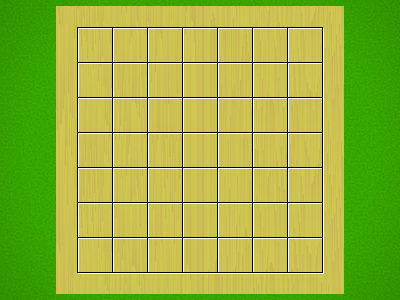 |
| e5,d6,c5,d5,d3,d4,e3,c4 | 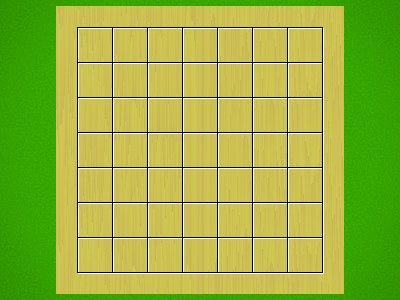 |
| d4,Swap,d5,d4-e5,e6,d5-e4,d4 | 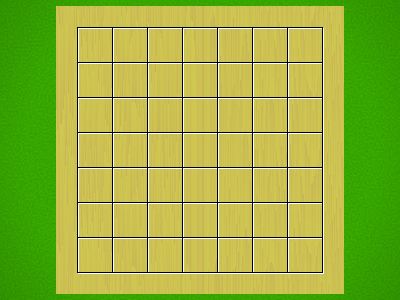 |
| e5,d6,c5,d5,d3,d4,e3 | 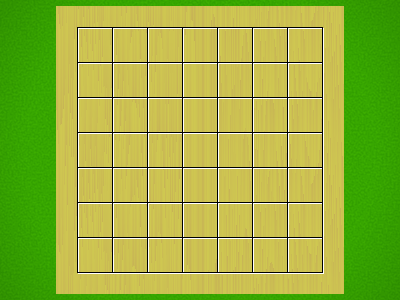 |
| c6,e5,d6,e6,e4,e7 | 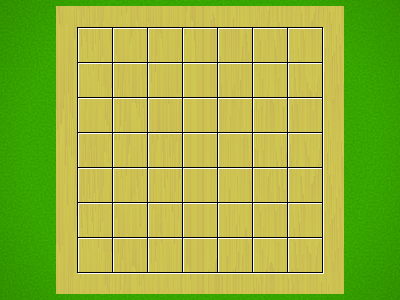 |
| d6,e5,c6,e6,e4,e7 | 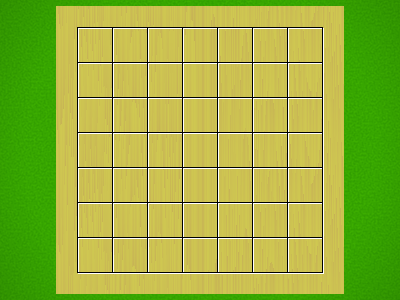 |
| d4,Swap,d5,d4-e5,e4,e3 | 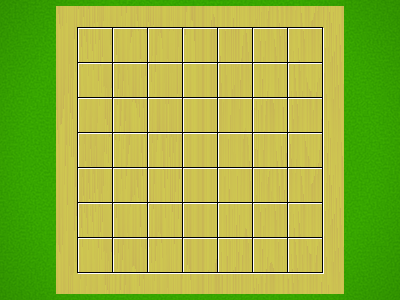 |
| d4,Swap,d5,d4-e5,e6,d5-e4 | 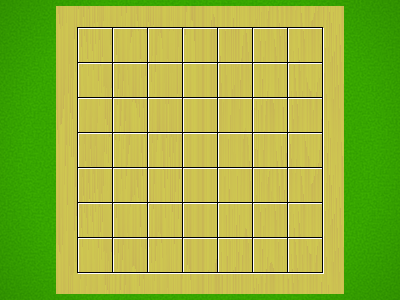 |
| d4,Swap,d5,d4-e5,h8,d5-e4 | 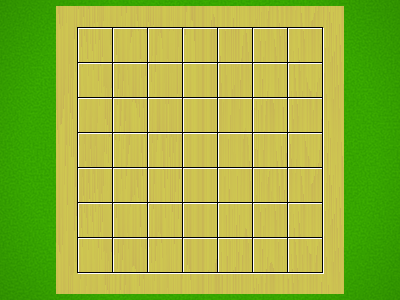 |
| d4,Swap,e6,d6,e6-d5,c5 |  |
| d4,Swap,e6,d6,e6-d5,e5 | 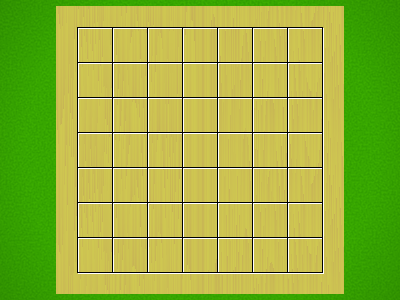 |
| d5,c5,d4,c4,b3,c3 |  |